How many goalies are drafted in the first round?
I read an article the other day about the consensus first-round NHL draft picks for 2012. Sadly, there were no goalies on the list. That led me to wonder: how often are goalies drafted in the first round? I posed the question on reddit but didn’t get a very satisfying answer.
Fortunately, the NHL offers an easy way to explore all of the draft results going back to 1963.
I looked at the data for the past 30 years (1982-2011) and found that in those three decades, 47 goalies have been taken in the first round. Two even went as the overall #1 picks: DiPietro in 2000 and Fleury in 2003.
Here’s the distribution by year:
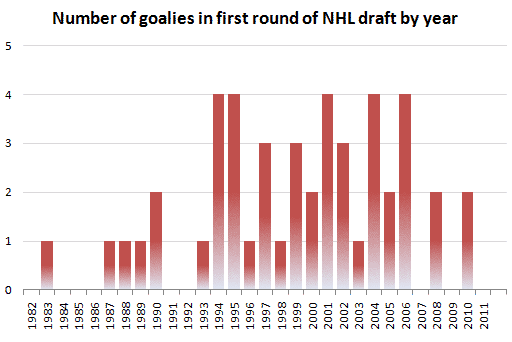
Number of goalies in first round of NHL draft by year
Keep in mind that the total number of first-round draft picks has increased over the years. Thus, it might be more informative to see what percentage of first-round picks were goalies:
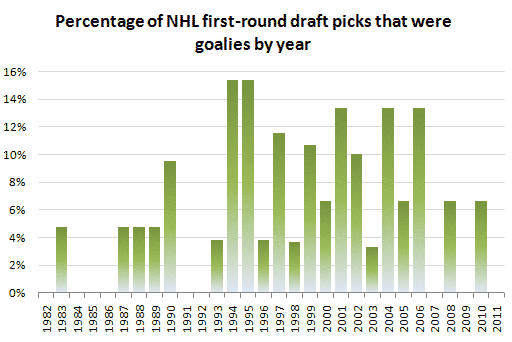
Percentage of first-round NHL draftees who were goalies, by year
One thing to notice is that some years were really good for goalies, but other years were really bad for goalies. In fact, 9 out of those 30 years saw no goalies get selected in the first round.
What “should” the number of goalies be? If we observe that the NHL maximum roster size is 23 men with 2 being goalies, and we assume that the same ratio should hold in the first-round draft picks, we’d expect to see 8.6% of the first-round picks used for goalies. Instead, we see an average of 5.8% of picks used for goalies. (Yes, in case you’re wondering, that’s a statistically significant difference; p<0.001)
The question becomes, why aren’t more goalies selected in the first round? Maybe they’re considered higher risk, and so not worth the “expense” of an early pick. Maybe the fall-off in goalie quality through the rounds is less extreme than for the other positions, so it is easier to get a quality goalie in a later round than, say, getting a quality forward in an early round. Not sure.
Idea for future study: where do goalie picks tend to fall in fantasy hockey drafts?
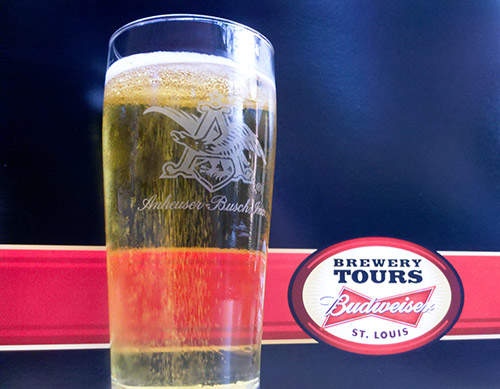
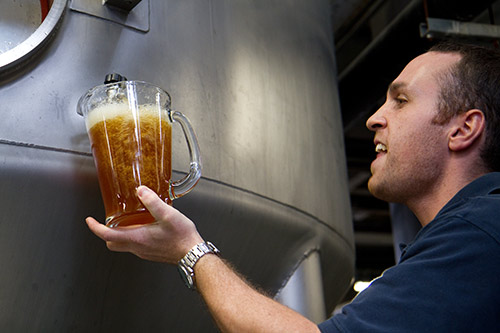

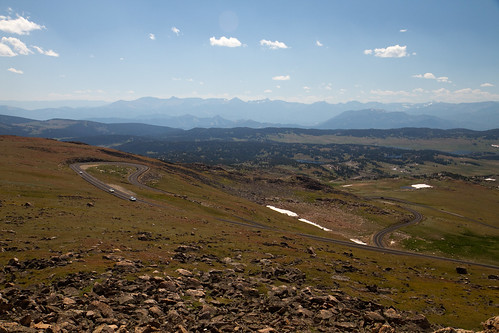
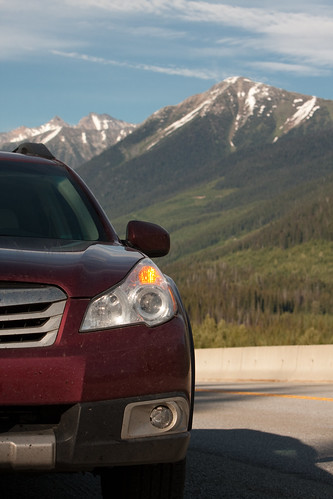
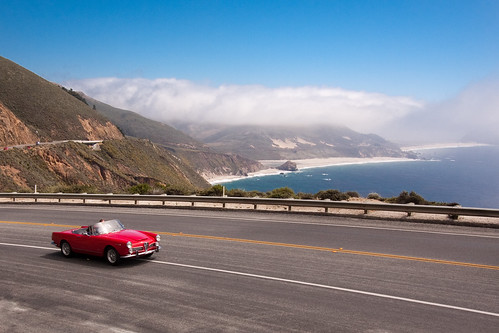
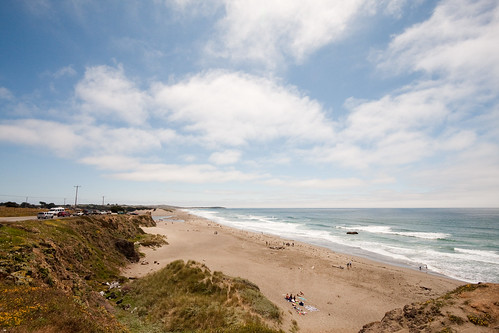
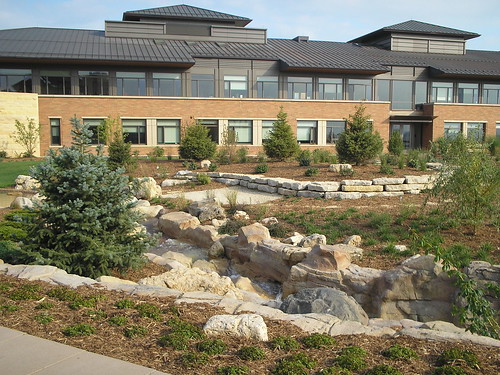
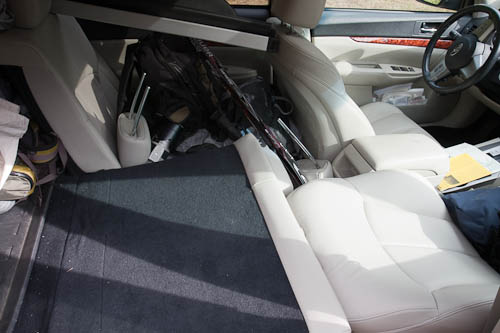
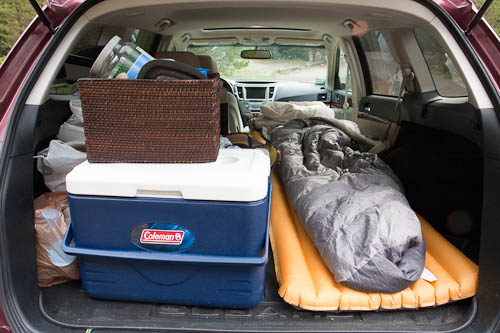


Recent Comments